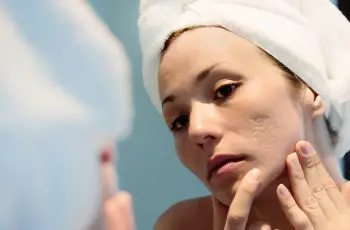
How to Care for Your Skin Before and After Ultherapy
As we age, our skin begins to lose firmness and elasticity, especially in areas like the face, neck, and jawline, where signs of aging tend to become most noticeable and difficult to manage.
One of the most visible symptoms of aging skin is sagging, often accompanied by fine lines, wrinkles, and a loss of definition in the lower face and under the chin area.
This is primarily due to the natural decline in the production of collagen, elastin, and hyaluronic acid—three key structural proteins responsible for keeping our skin plump and youthful.
When these elements decrease, the skin becomes thinner, less resilient, and more susceptible to laxity, dullness, and a crepey or rough texture.
Fortunately, there are effective non-surgical treatments available that help restore firmness and stimulate the skin’s own regenerative process without requiring incisions or downtime.
What Is Ultherapy and How Does It Work?
Ultherapy is a non-invasive cosmetic procedure that uses focused ultrasound energy to lift, tighten, and rejuvenate the skin from within by stimulating collagen production.
It’s especially popular for treating sagging in areas like the brow, jawline, neck, and décolleté, delivering natural-looking results without the need for surgery.
Ultherapy relies on microfocused ultrasound with visualization (MFU-V) technology, allowing practitioners to target the deeper layers of skin with precision.
Unlike high-intensity focused ultrasound (HIFU), which penetrates more aggressively, MFU-V gently heats tissue in small zones, minimizing damage to surrounding areas.
The device sends controlled ultrasound energy beneath the surface of the skin, where it heats targeted tissues to temperatures between 62°C and 65°C (144°F to 149°F).
This thermal energy causes existing collagen fibers to contract immediately, resulting in a subtle lifting effect and tighter skin in the treated area.
At the same time, the heat stimulates a natural wound-healing response that leads to the production of fresh, new collagen over the following weeks and months.
One key advantage of Ultherapy is that it bypasses the outer layer of the skin, reaching deeper structures without disrupting or damaging the skin’s surface.
This allows the procedure to replicate the benefits of a surgical facelift on a smaller scale, offering lift and firmness with no incisions, scarring, or extended recovery time.
How to Prepare Your Skin Before Ultherapy
Proper pre-treatment skin care can enhance your Ultherapy results by preparing the skin to heal more efficiently and respond more effectively to the ultrasound stimulation.
Start by incorporating collagen-boosting ingredients into your routine at least two weeks prior to your appointment to strengthen the skin and clear out damaged proteins.
A peptide-rich formula like Alastin Regenerating Skin Nectar is ideal, as it supports skin regeneration and enhances the body’s natural repair process.
This product is formulated to help remove old collagen and elastin fibers, making room for the new, healthy collagen that Ultherapy will help stimulate.
Adding a vitamin C serum is another excellent pre-treatment step, as this antioxidant is vital for collagen synthesis and protects the skin against environmental stress.
Vitamin C can also brighten dull or uneven skin tone, helping you achieve an even more radiant post-treatment glow and faster visible improvements.
Avoid using harsh exfoliants or chemical peels for a few days before your session, as over-sensitized skin may become more reactive to the ultrasound energy.
Stay well-hydrated and use a gentle, nourishing moisturizer to keep your skin barrier intact in the days leading up to your Ultherapy appointment.
How to Care for Your Skin After Ultherapy
After your treatment, your skin will enter a recovery phase where it works to repair itself and produce new collagen, which is key to achieving firm, lifted skin.
Post-treatment skin care should focus on soothing any temporary irritation and continuing to support the skin’s regenerative process over the next several weeks.
Apply a calming, hydrating balm immediately after treatment, such as Alastin Recovery Balm or Neocutis NEO THERAPY Neck & Décolleté Cream, to reduce redness and sensitivity.
These post-procedure products help promote healing while minimizing any discomfort, dryness, or swelling that may occur in the hours or days following treatment.
To maintain collagen production, incorporate a growth factor serum like SkinMedica TNS Advanced+ Serum, which helps rebuild skin structure and elasticity.
Continue using your vitamin C serum in the morning, as its antioxidant properties will protect your healing skin and assist in the synthesis of new collagen fibers.
Avoid direct sun exposure and always apply a broad-spectrum SPF of 30 or higher to protect the skin from UV damage during this vulnerable period.
Hold off on exfoliants, retinoids, or active treatments for at least 3 to 5 days after Ultherapy to prevent irritation and allow your skin to recover fully.
Staying consistent with your aftercare routine will help you get the most out of your treatment and extend the longevity of your results.
What Results Can You Expect from Ultherapy?
Ultherapy provides gradual results, with most people noticing subtle improvements in skin tightness, firmness, and overall lift within two to three months post-treatment.
As collagen continues to rebuild over time, the lifting effects become more pronounced, with optimal results typically visible at the 3- to 6-month mark.
The skin may appear smoother, more sculpted, and better defined—particularly in areas prone to sagging like the jawline, neck, and under the chin.
These results look natural because they are generated from your body’s own collagen production rather than fillers or implants.
Ultherapy outcomes can last anywhere from 1 to 3 years depending on your skin condition, age, and lifestyle habits such as sun exposure, smoking, and diet.
In some cases, patients report enjoying sustained improvements for as long as five years, though maintenance treatments every 12 to 18 months can help prolong results.
Key Benefits of Ultherapy
Ultherapy is an excellent option for those looking to rejuvenate and firm their skin without the risks, cost, or recovery time associated with cosmetic surgery.
The procedure improves skin laxity, fine lines, and wrinkles by stimulating the body’s natural healing mechanisms, with no needles, incisions, or anesthesia required.
Because the treatment is highly targeted, it allows for precision lifting in delicate areas like the brow, under-eye, and neck where sagging is most noticeable.
Ultherapy can be safely paired with other non-invasive treatments like dermal fillers, microneedling, IPL, or chemical peels to enhance overall facial rejuvenation.
With no downtime required, most patients can return to work and resume normal activities the same day as treatment, making it ideal for busy lifestyles.
Potential Drawbacks of Ultherapy
While Ultherapy is generally safe and effective, it may not be suitable for everyone, especially individuals with very advanced sagging or poor skin elasticity.
Mild side effects such as redness, tenderness, swelling, or tingling in the treated areas are common but usually subside within a few hours to a couple of days.
In rare cases, patients may experience slight bruising or numbness, though these symptoms typically resolve on their own without medical intervention.
Some reports suggest that ultrasound energy may lead to unintended fat loss in the face, particularly in individuals with low body fat or very thin skin.
Choosing a highly experienced provider is crucial to minimizing this risk and ensuring ultrasound energy is delivered at the appropriate depth and angle.
Ultherapy is not recommended for individuals who are pregnant or breastfeeding, as the safety of the procedure in these populations has not been thoroughly studied.
lternatives to Ultherapy for Firmer Skin
If you’re not ready for Ultherapy, or if you’re seeking complementary treatments, there are several effective skin care options that can help firm and smooth the skin.
Topical ingredients like retinol, peptides, growth factors, and exosomes have been shown to support collagen production and improve the appearance of mild skin laxity.
Vitamin C serums, niacinamide, and hyaluronic acid also offer powerful anti-aging benefits and can help improve hydration, firmness, and skin tone over time.
While topical treatments may not produce the dramatic lifting seen with Ultherapy, they are great for early prevention and maintaining overall skin health.
Consistency is key when using topical products—results build gradually and are best achieved when these products are incorporated into a daily routine.
The Bottom Line
Ultherapy is a powerful, non-invasive option for lifting and tightening the skin using ultrasound energy that stimulates collagen production deep within the dermis.
With proper preparation and a smart post-treatment skincare regimen, you can optimize your Ultherapy results and enjoy firmer, smoother, more youthful-looking skin.
Incorporating collagen-boosting serums and protective antioxidants before and after treatment can significantly enhance and prolong your outcome.
While Ultherapy isn’t for everyone, it offers a natural-looking, long-lasting solution for people looking to rejuvenate their skin without surgery or downtime.
If you’re considering Ultherapy, talk to a board-certified provider and make sure your skincare routine matches your unique needs and skin type.


